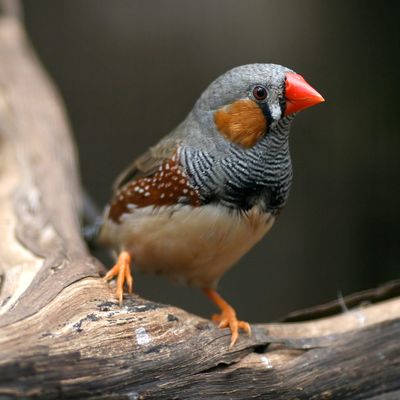
Each day, it seems, humans receive another reminder that our capacity for speech isn’t really as special as we thought. Up and down the animal kingdom, other species are talking to one another in ways that seem remarkably similar: We know now, for instance, that whales have accents, that orangutans can mimic the sounds of human conversation, and that gorillas gesture much like we do.
It’s not just mammals, either — birds have proven a particularly fruitful focus for researchers studying animal communication. Earlier this year, for example, researchers discovered that zebra finches, like human parents, use a form of baby talk with their youngest offspring. The Japanese great tit, meanwhile, uses syntax to organize its songs, combining chirps in different ways to convey different meanings.
But human speech isn’t always a flawless process. We mix up words, we stumble, we suffer from disorders that affect how we communicate, we pack our sentences with meaningless fillers and other disfluencies. And so, to better understand why, scientists have re-created some of those same issues in the animal world: As Moheb Costandi recently reported for the BBC, two separate research teams are currently studying birds that stutter, a path they hope will eventually shed some light on how we learn to talk — and how to fix the problems that arise along the way.
There are important similarities between spoken language and bird songs, Constandi explained: Both “are learned by listening to, and imitating, others,” he wrote. And “each human language contains a finite set of words” and “a set of rules by which words can be combined into meaningful phrases and sentences. These rules — known as compositional syntax — were thought to be unique to our species,” an idea that the Japanese tit study disproved.
Both of the research teams conduct their stuttering work on zebra finches, a species known for its vocal nature. The first, from Duke University, modified an area of the birds’ brains called Area X, “considered to be the bird equivalent of a part of the human brain called the striatum, which becomes active when people imitate the speech of others,” Costandi explained. The other, from Rockefeller University, bred finches to carry genetic mutations linked to Huntington’s disease and its associated speech problems. Those birds “grew up with profound vocal deficits,” Constandi wrote, stuttering and failing to mimic the songs of the birds around them. “What’s more, over time both their syllables and their syntax deteriorated.”
By examining where the vocalization process breaks down in their avian subjects, both projects have identified similarities in the neural structures that allow both us and birds to communicate: “These studies reveal how the song-producing regions of birds’ brains work,” Costandi wrote, “and imply that the speech-producing bits of our own brains operate in a similar way” — and seeing our own abilities in other species may offer clues as to how we got to where we are.




